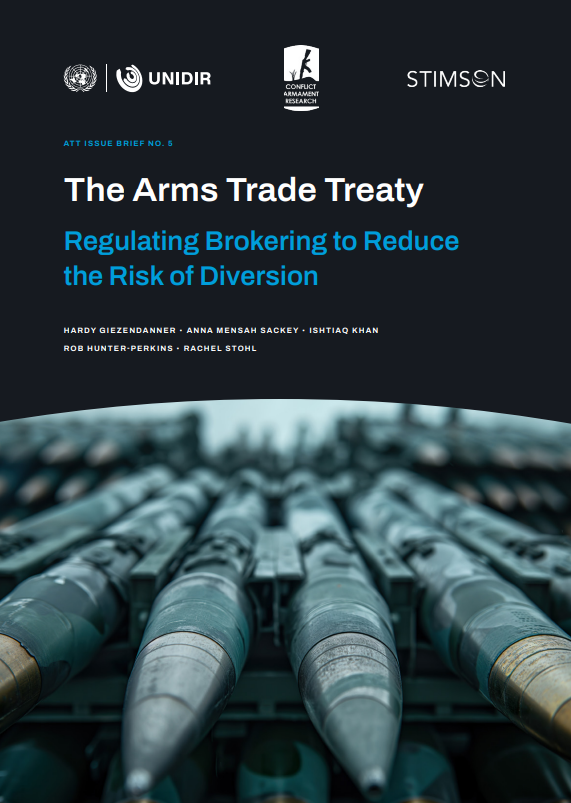
목차
1. Introduction 10
1.1. Purpose of this ATT Issue Brief 12
1.2. What is an arms broker and what are arms brokering activities? 13
2. Brokering and Arms Diversion 27
2.1. Use of front and shell companies 27
2.2. Use of circuitous routes and exploitation of multiple jurisdictions 30
2.3. Falsifying transfer documentation 31
2.4. Use of flags of convenience 33
2.5. Misreporting of cargo 35
2.6. Challenges in investigations of brokers and post-transfer diversion 36
3. The Arms Trade Treaty Obligation on Brokering and National Implementation of the Obligation 39
3.1. Connecting ATT Article 10 to other relevant treaty provisions 39
3.2. National implementation of ATT brokering provisions: Insights from ATT initial reports 40
3.2.1. Status of implementation of ATT Article 10 45
3.2.2. National definitions and understandings of brokering 45
3.2.3. Types of control measures 45
3.2.3.1. Registration of brokers 46
3.2.3.2. Licensing and applications for authorization 47
3.2.3.3. A two-stage process (or two-step approach) 47
3.2.3.4. Blanket prohibition of brokering 48
3.2.4. Scope of control measures 48
3.2.4.1. Scope of control measures: Items covered 48
3.2.4.2. Scope of control measures: Jurisdiction 48
3.2.4.3. Scope of control measures: Additional scope beyond the ATT 49
3.2.5. Exemptions in national brokering control measures 49
3.2.6. Record-keeping 50
3.2.7. National authorities for regulating brokering 51
3.2.8. Implementation assistance 52
4. Conclusion: Multilateral options for enhancing the regulation of brokers to counter diversion 56
4.1. Considerations on brokering for the Working Group on Effective Treaty Implementation 57
4.2. Opportunities to enhance international cooperation to counter the role of brokering in the diversion of conventional arms 60
List of tables, boxes, figures and case studies
Table 1. Definitions and descriptions of brokers and brokering in regional instruments 14
Box 1. Arms Brokering: Mediation or dealing between two third states (Scenarios 1 and 2) 17
Box 2. Arms Brokering: Mediation (Scenarios 3 and 4) 19
Box 3. Brokering controls, extraterritoriality and jurisdiction 22
Box 4. Arms Bokering: Extraterritorial brokering (Scenarios 5 and 6) 24
Box 5. Summary of core brokering and closely associated brokering activities 26
Case Study 1. Opaque brokering ownership 29
Case Study 2. Alleged use of circuitous routing for illicit arms transfer 31
Case Study 3. Falsified transfer documentation 33
Case Study 4. Use of flags of convenience in sanctions evasion 34
Case Study 5. Letfallah II 36
Box 6. Red flags and risk indicators related to brokers and brokering activities 38
Box 7. The ATT obligation on brokering 39
Table 2. Summary and overview of national implementation of ATT Article 10 on brokering 42
Table 3. Types of brokering control measures used by ATT states parties 46
Box 8. An example of a national registration system for brokers and brokering 47
Figure 1. Competent national authorities for the regulation of brokering 51
Figure 2. National authorities involved in decision-making processes related to brokering 52
Box 9. Brokering-related information contained in 2024 PoA national reports 53
Table 4. Implementation of the PoA brokering controls: Insights from national 2024 reports 53
Table 5. ATT states parties that indicated assistance needs for regulating the brokering of SALW in their 2024 national reports on the implementation of the PoA 54
Box 10. Checklist of key elements and questions related to national regulation of brokers and brokering activities 58
Box 11. Cooperation including mutual legal assistance against illicit arms brokering activities 61


